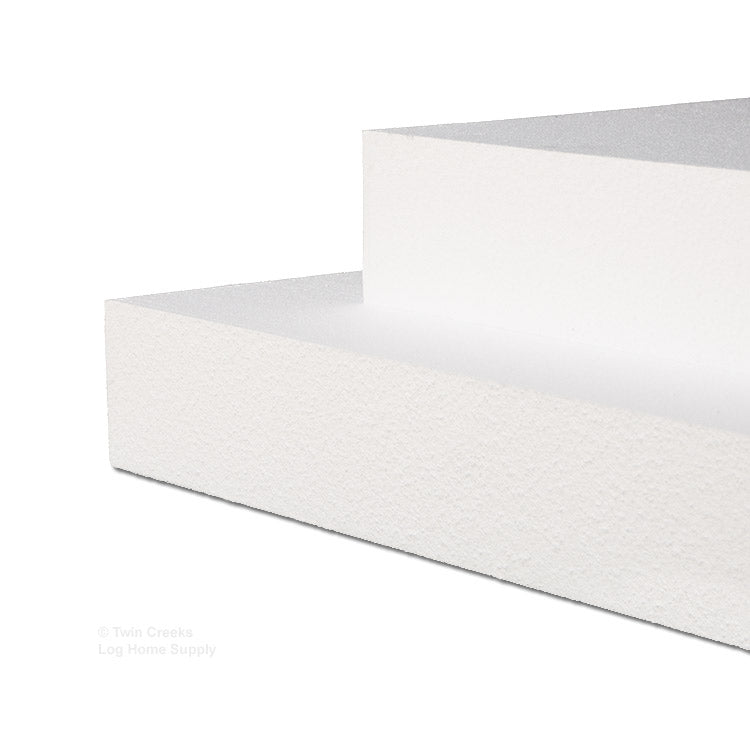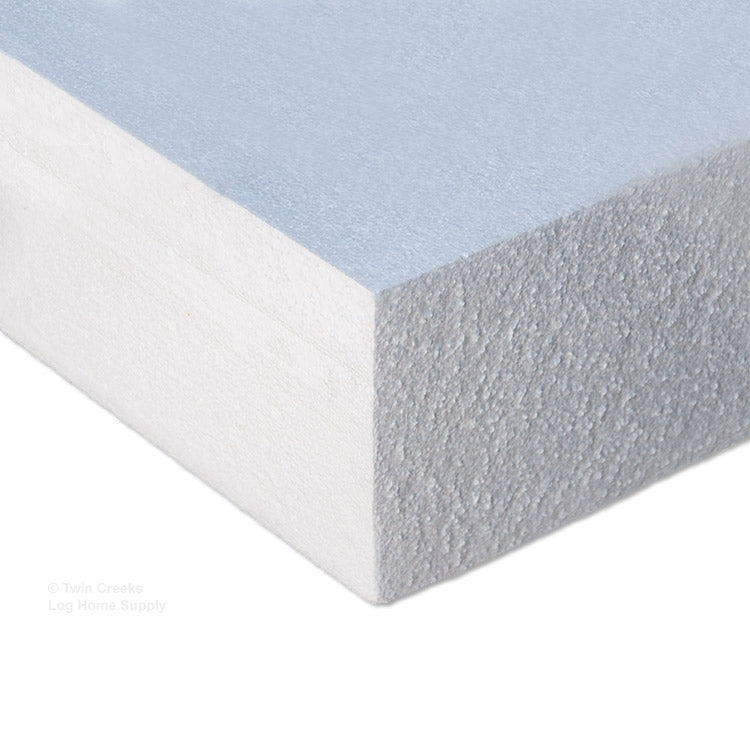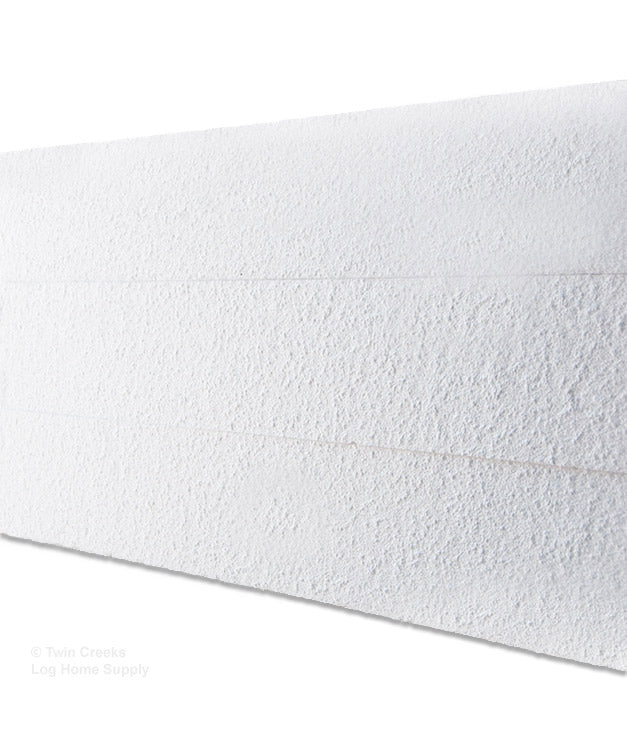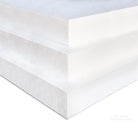EPS Foam Panels
Details
Expanded Polystyrene (EPS) Roof Insulation is a lightweight, closed-cell foam insulation that is ideal for built-up roofing applications used in conjunction with exposed timber rafters. Built-up roofing methods allow for all the roof insulation to be fastened above interior ceiling decking and beams. This provides an effective alternative to other conventional insulation materials such as fiberglass batts and blown rock wool.
Common Uses for EPS Foam Insulation Panels:
• Residential Built Up Roofing: Such as exposed beam ceiling configurations are an integral part of modern timber construction with exposed beams. The timber beams are placed first, followed by a layer of tongue and groove decking. From that point, a layer of foam panel insulation is applied replacing the need for conventional fiberglass batts or blown rock wool insulation.
• Commercial Built Up Roofing.
• Sidewall Insulation.
Features and Benefits EPS Roof Insulation:
• Consistent R-Value - The R-Values of EPS Foam will stay consistent due to its exceptional stability and resistance to compression.
• Cost Efficient - EPS Foam Panels have a lower cost per R-value than many other insulation products, resulting in measurable energy savings over time.
• Easy to Cut - EPS foam can be easily cut and shaped to accommodate any roof shape.
• Dimensionally Stable - EPS foam panels remain dimensionally stable over the life of your roof and moisture has little to no effect on stability.
• Lightweight Construction - EPS foam panels without pre-bonded OSB sheathing are light and easy to maneuver onto the roof and set into place.
• Easy Installation - Each panel can be easily cut to fit, tightly joined together with other panels and fastened securely.
EPS Roof Insulation Specifications:
• R-Value: R4 per inch of depth.
• Available Width: 4'
• Available Lengths: 8' lengths are standard. Lengths up to 16' are available for special order.
• Available Depths: Minimum thickness of 3 1/2" up to a maximum thickness of 40".
• Typical Lead Time: This is a special-order product. Please allow 2-3 weeks for production.
Common EPS Roof Insulation Panel Sizes:
• 4'x8' x 5-1/2"
• 4'x8' x 7-1/2"
• 4'x8' x 9-1/2"
**These are pre-quoted sizes, please call us to request a custom quote if you require a different size than what is listed.**
Storage of EPS Foam Insulation Panels Prior to Installation:
• EPS Foam Panels must be protected from exposure from the elements and must not be stored in direct ground contact.
• Set aside a level spot to store panels to ensure they will not lean or tip over.
• Lay panels flat on "sticking" lumber (such as 2x4's laid on their side) at least 3 inches from the ground.
• Place sticking lumber close enough together so that the panels will not sag, use 3 or more sticks if needed for longer lengths.
• Try to organize your panel delivery for efficiency (i.e. store panels from the first floor separate from panels for the second floor, and so on.).
• Mark individual panels so that you can identify panels for each specific place as you need them.
• We recommend moving and setting EPS foam panels with the help of at least one other person.
Fastening EPS Roof Insulation: Exposed Beam Ceiling Built-Up Roofing
We recommend a flat head structural wood screw (such as a Headlok Panel Fastener) that passes through all the layers of roofing material to the beam. The screw should be measured to penetrate through each layer included in the insulation membrane and at least 2" into the structural beam. The insulation membrane typically includes OSB sheathing, the EPS foam panel, house wrap or vapor barrier, ceiling decking material or gypsum board and the interior beam. Be aware of where your beams or studs are to fasten into the middle of the beam. This ensures a strong point of anchor and prevents potentially drilling through ceiling decking.
Product Resources:
• EPS Thermal Insulation Performance Requirements
• EPS Life Cycle Analysis
• SIP Roofing Panel Connection Diagrams
• Nailbase Panel Installation Instructions










